
Do you have a 3D printer and aquarium in your home? If yes, chances are you’ve already thought about printing something to spice up your aquarium décor. However, before you go placing anything together with your pet fish, you must ensure that these materials won’t pose any harm to them.
Polylactic acid or PLA filament, one of the most widely used materials in desktop 3D printing, is a non-toxic polymer that is food safe. If it’s good enough for food, surely it’s good enough for your fish, right?
The simple conclusion is that PLA filament is safe for fish, but while its properties are good to go, there are a handful of things to consider before embarking on an aquarium makeover.
Table of Contents
Is 3D Printed PLA Safe for Your Pet Fish?
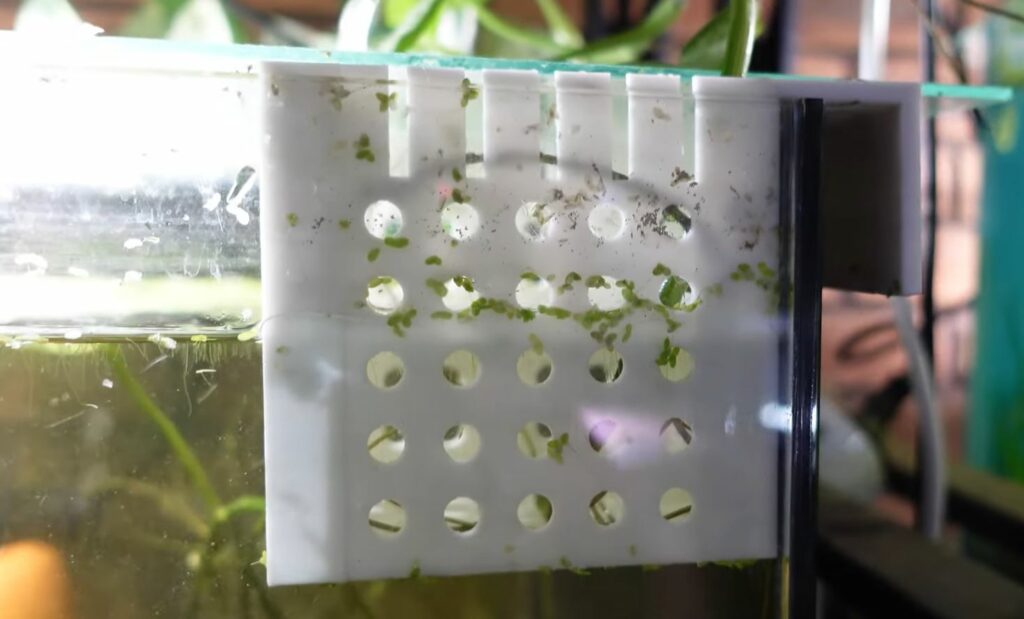
The non-toxic properties of PLA make it a great go-to option for aquarium usage. You’ll want to ensure the PLA filament you purchase for your aquarium project is 100% food safe and DOESN’T CONTAIN any aquarium nasties like flex composites, glow-in-the-dark properties, or anything beyond the norm.
Food-safe PLA is entirely safe for your pet fish, but there is more to consider before proceeding. The other side of the coin is that PLA is biodegradable, and placing it in water speeds up that process. Water absorption breaks down PLA quicker than you think, so you’ll need to waterproof your 3D-printed aquarium goodies to protect your fish.
Failure to waterproof your PLA material can also cause unwanted algae to grow. 3D printing causes concerns about dangerous chemicals entering during the process, which is another reason you need to ensure that you use suitable PLA filament, as food-safe options don’t release harmful compounds. Furthermore, don’t forget to clean the 3D printer to prevent filament cross-contamination.
To clean your 3D printer, wipe the printer bed, remove the old filaments in the waste bin, and remove bits that may have fallen in the printer housing. Also, cleaning the nozzle removes any remaining filament debris.
Is PLA Safe to Use in Saltwater Aquariums?
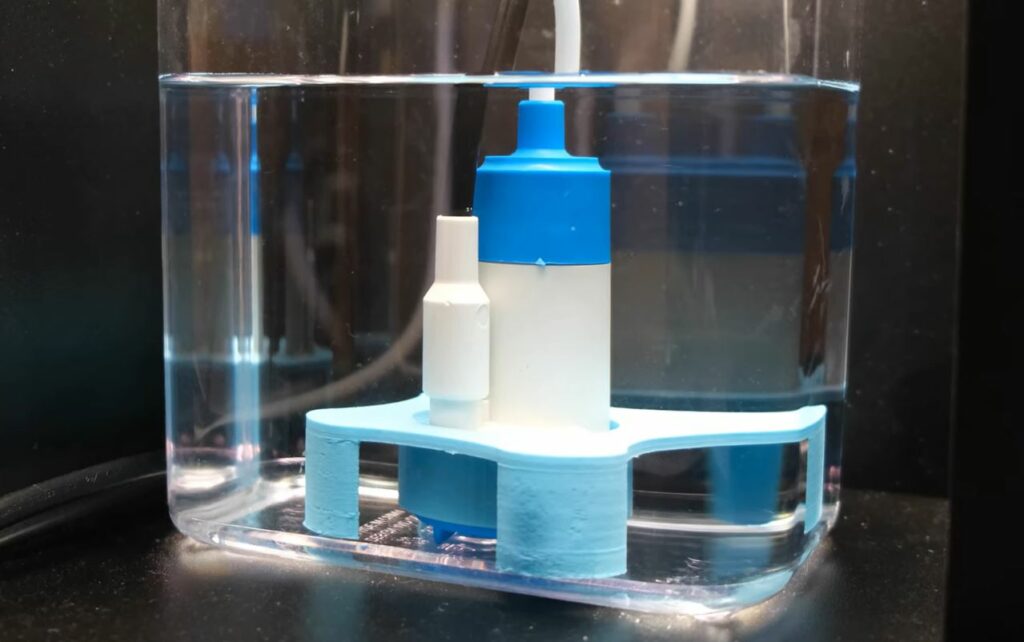
Saltwater aquariums are a different ball game for the most part and may leave you wondering if PLA is on the safe list for saltwater aquariums too. The good news is that PLA filament is just as safe for saltwater aquariums as freshwater ones. The only difference is that saltwater increases PLA decomposition faster, so waterproofing becomes a bigger must.
What are the Precautions for Using PLA in Aquariums?
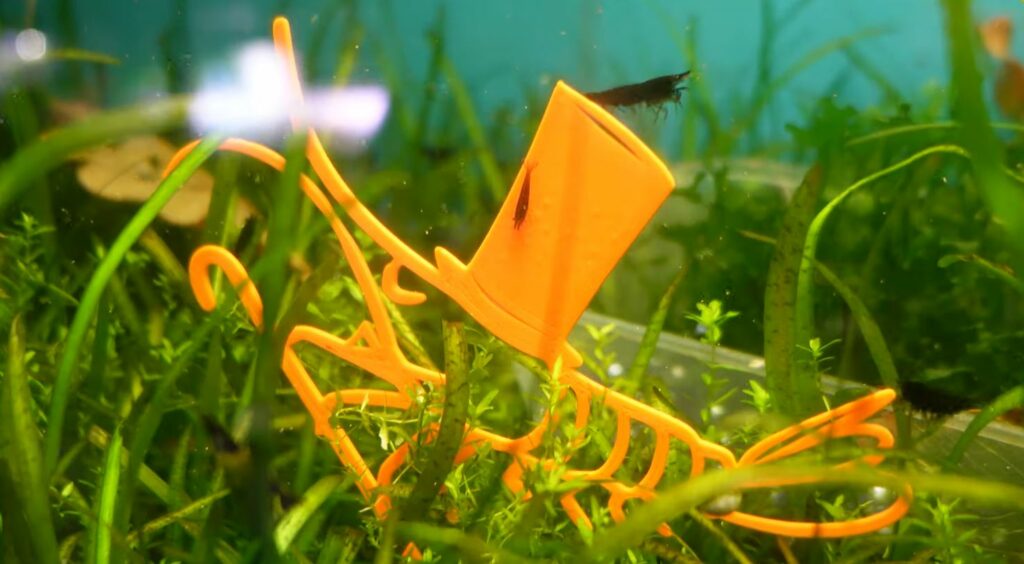
When you buy PLA filament, you should research it and ensure it’s 100% food safe. Although a sparkly aquarium decoration sounds appealing, it could mean the end of the health of your aquarium. There should be no extra composites in the filament like glitter, color-changing chemicals, flexible qualities, or anything that varies from pure PLA.
PLA is hydrophobic because of its biodegradable properties – it’s made of cornstarch! Pure PLA in water for extended periods would be like watching your coffee granules disappear into your morning cuppa – if the process took a few months. Although PLA disintegration is a wholly different chemical reaction, you must rescue your PLA filament from this awful fate by applying a waterproofing sealant.
Waterproofing PLA items also prevents unwanted algae and bacteria buildup in the water because that would happen once it starts biodegrading. It’s a unique, scientifically satisfying process, but not ideal for your aquarium’s purposes. In short, you’ll need to find a way to waterproof PLA, but we’ll talk more about that next.
P.S. never ever ever forget to purge your 3D printer from other filaments before printing with PLA to ensure there’s no cross-contamination!
How to Waterproof 3D Printed PLA Models for Aquariums?
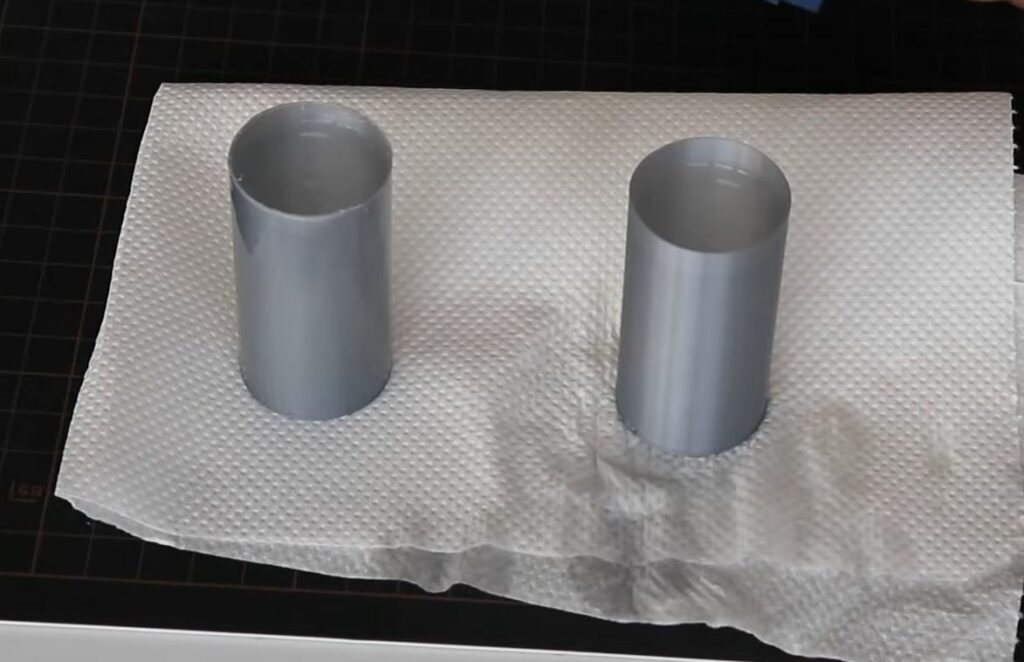
Since PLA can’t survive the aquarium on its own, it is essential to coat the object with a waterproof sealant. Your options include coating with epoxy resin or using a liquid rubber sealant. Both have advantages and disadvantages, so you’ll need to decide what will work best for you.
Coating PLA With Epoxy Resin
Epoxy resin is readily available and is adored by the crafting community for its sleek, durable qualities. Once it’s 100% cured, it is safe for aquariums. Epoxy resin comes in two parts that you’ll need to mix according to their given ratio. You’ll need baking paper, gloves, plastic mixing cups, a stir stick, different-sized paint brushes, and isopropyl alcohol.
Six steps to coating with epoxy resin are as follows:
1. Lay out baking paper on the area you’ll be working on.
2. Put gloves on and mix your two epoxy resin parts into a plastic cup. Stir the resin for two minutes, ensuring the two parts are 100% mixed.
3. Work quickly to apply an even coat to all parts of the object using a brush big or small enough for the area. Start with the smaller hard-to-reach spots and move on to the larger surface areas.
4. You might want to stand the object on an upside-down paper cup when working.
5. Leave the object to dry in the plastic cup for 24 hours.
6. You can clean your brushes and messes with the isopropyl alcohol.
| Epoxy Resin Pros | Epoxy Resin Cons |
| Smooth finish | Expensive |
| Quick drying | Hard to work with |
| Completely durable | Messy |
| Readily available | Requires many materials to paint and mix |
Coating PLA With Liquid Rubber
An easier and quicker option to coat PLA is to use liquid rubber. Liquid rubber is aquarium safe as it does not contain any solvents. You also get spray-on options like Flex Seal products. You need to ensure that the liquid rubber you use is 100% rubber and has no additives dangerous for your aquarium. If you’re using a paint-on rubber, you’ll need a paintbrush and a surface to work on in a well-ventilated area.
Four steps to coating with liquid rubber:
1. Prepare your working surface
2. Paint or spray the liquid rubber onto the PLA object. Ensure you cover the entire surface area.
3. Leave to dry for 7 hours
4. Apply another coat and leave to dry again
| Liquid Rubber Pros | Liquid Rubber Cons |
| Easy to use | Harder to find the right product |
| It doesn’t require many materials | Needs multiple coats |
| Quicker than epoxy resin | |
| Easy to clean up |
Which Filament is Better to Use for Aquariums?
PLA isn’t the only filament option out there! Although it is ideal thanks to its non-toxic qualities, the need to waterproof it can be a hassle. The other options include PETG and ABS filament, which might even be better than PLA. The best option, according to aquarium experts, is PETG filament.
PLA VS PETG VS ABS
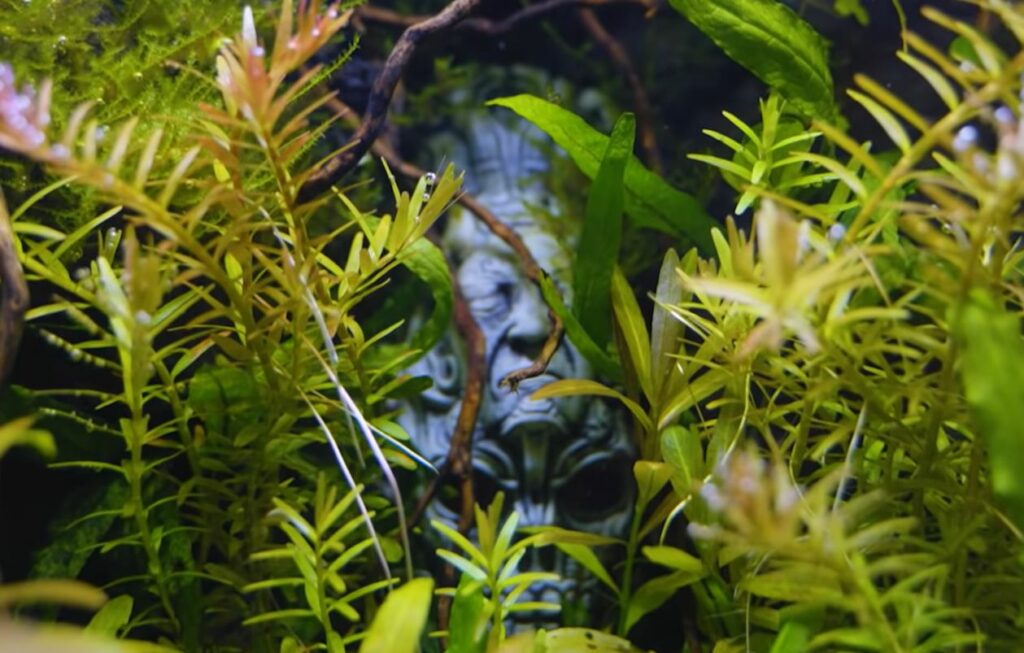
As previously discussed, PLA filament is 100% safe for fish and aquariums, thanks to its natural cornstarch substance. All you need to do is make sure you don’t use PLA filament with any additives and waterproof it before putting it into your aquarium.
| PLA filament pros | PLA filament cons |
| 100% safe for fish and aquariums | Dissolves in water due to its biodegradable nature |
| Both saltwater and freshwater safe | Requires the extra effort of waterproofing |
| Cheaper than other filaments | Can’t use PLA filament with decorative additives |
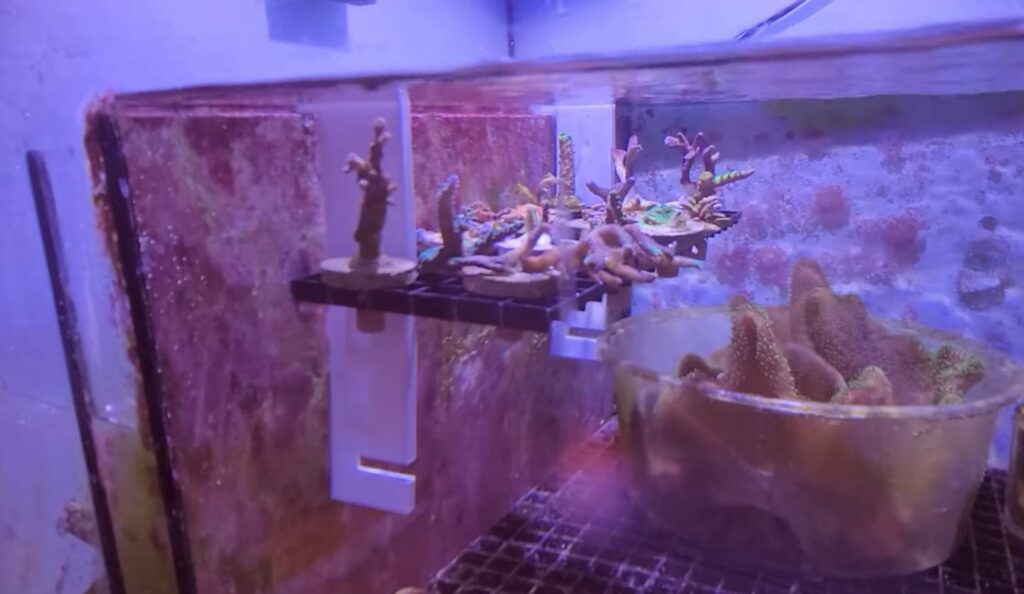
PETG filament is a robust and food-safe plastic polymer commonly used for consumables like plastic bottles and food packaging. It is entirely non-toxic, and most brands are FDA-approved, which is good news for the aquarium community. PETG is perfect for printing 3D objects that you intend to place in your tank.
Like PLA, you need to find food-safe PETG filament without any additives. Colored PETG is also risky, so the transparent filament is best. The other benefit of PETG is that it is waterproof and repels water on its own, so you don’t need to worry about coating it. All you really need to do is print it and place it in your aquarium! I cannot emphasize this enough: remember to clean your 3D printer beforehand.
| PETG filament pros | PETG filament cons |
| 100% waterproof | Limited colors, as most dyes have toxins |
| Strong | Expensive |
| FDA-approved and non-toxic | |
| It doesn’t require an extra coating |
ABS filament is often used for plumbing purposes thanks to its waterproof qualities. It is also a strong, flexible material that appeals to structural elements in an aquarium. The downside is that ABS is petroleum based, which doesn’t fit well with the health of fish and corals.
There have been success stories about ABS filament working for fish tanks, but it is risky as others have had negative experiences where fish and coral died. The problem with ABS filament is that many manufacturers add toxic chemicals that will seep into the water if you use it. If you are looking for an aquarium-safe option, your best bet would be white ABS.
| ABS filament pros | ABS filament cons |
| Waterproof | Mostly unsafe for aquariums |
| Strong and flexible | Have caused aquarium fatalities in the past |
| Works well structurally | More expensive than PLA |
Check out our related article on PETG vs ABS, PLA vs PETG, and ABS vs PLA here to learn more.
Best 3D Printed Models for Aquariums
Whether you opt for PLA or PETG as your filament option, your 3D printing project is an exciting endeavor that will brighten up your aquarium with décor and useful tools. You can turn your imagination into reality when it comes to printing ideas for your aquarium, but here are a few to get your creativity flowing!
Useful Aquarium Tools
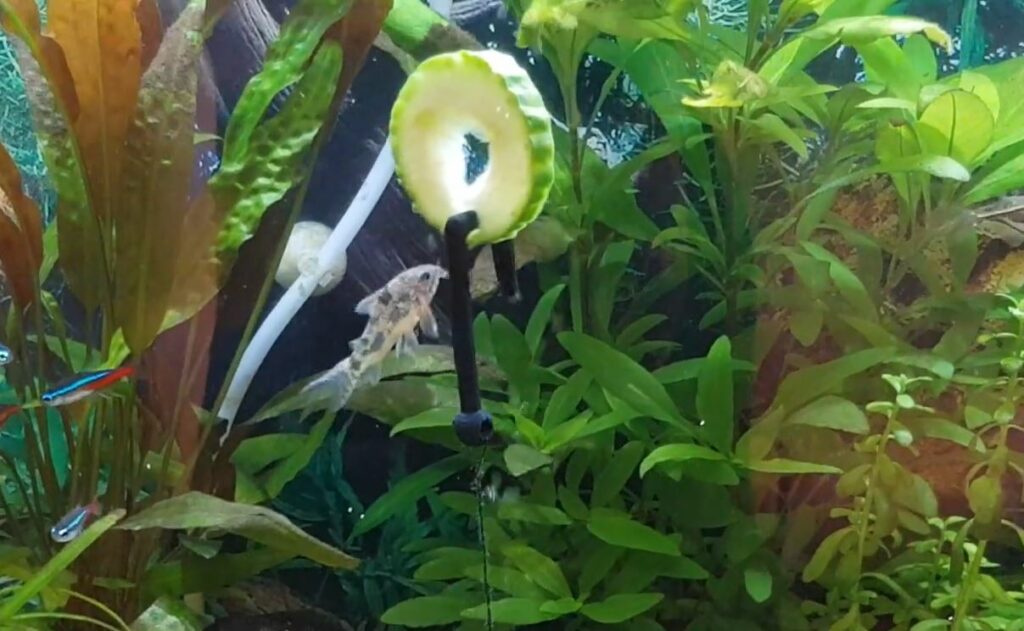
Need something to help the functionality of your tank? Turn to your trusty 3D printer! You can create objects like fragment plugs that you can place between rocks or stands to hold items up. The world is your oyster when it comes to making useful 3D printed solutions.
Decorative Items
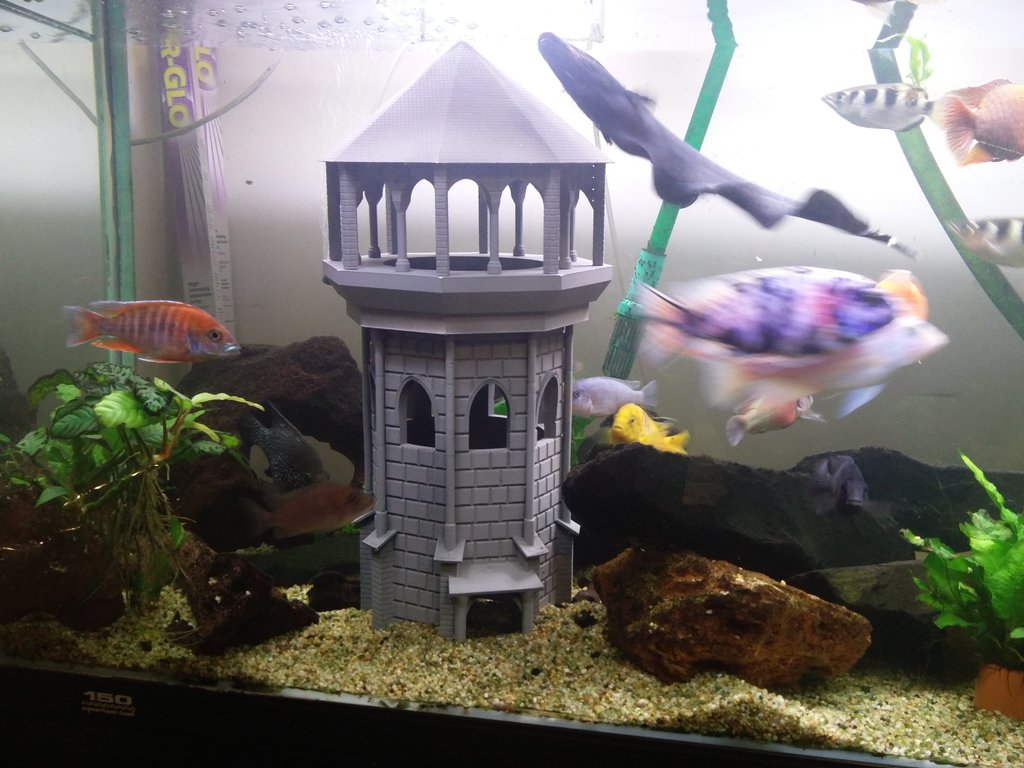
Every aquarium owner likes decorating the interior of their tank with weird and innovative things, and 3D printing allows you to change up the décor as often as you wish. You can come up with a theme such as the lost city of Atlantis, a shipwreck or pirate paradise to inspire your designed items.
You can even print a skull, Darth Vader, watch tower, or something you’ve seen in the pet shop that you’ve always wanted. BIG or small, 3D printing allows for great inspiration!
Bottomline
PLA or polylactic acid is a great and affordable filament option thanks to its non-toxic nature. PLA on its own won’t work because it is biodegradable and slowly dissolves over time. If you’re really set on using PLA, you’ll need to waterproof whatever you’ve printed with epoxy resin or liquid rubber before placing it in the tank. Other precautions include finding food-safe, non-additive PLA and constantly cleaning your 3D printer of other filaments before using it.
If using PLA sounds like too much of an effort, the better option would be the food-safe PETG filament, which is inherently waterproof and aquarium safe. I wouldn’t recommend using ABS filament, as most options are toxic to aquariums.
Happy printing!

